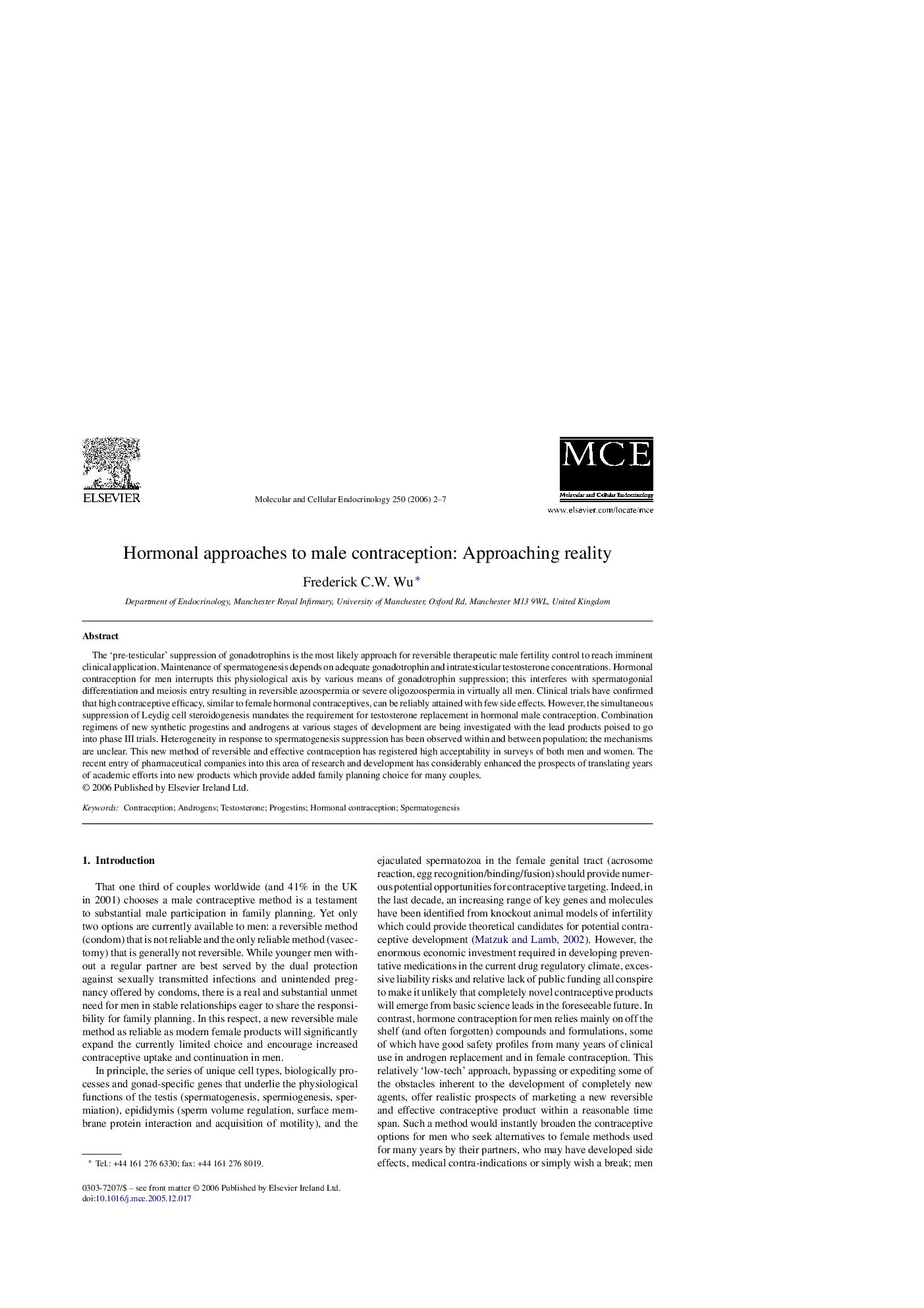| Article ID | Journal | Published Year | Pages | File Type |
|---|---|---|---|---|
| 2198110 | Molecular and Cellular Endocrinology | 2006 | 6 Pages |
The ‘pre-testicular’ suppression of gonadotrophins is the most likely approach for reversible therapeutic male fertility control to reach imminent clinical application. Maintenance of spermatogenesis depends on adequate gonadotrophin and intratesticular testosterone concentrations. Hormonal contraception for men interrupts this physiological axis by various means of gonadotrophin suppression; this interferes with spermatogonial differentiation and meiosis entry resulting in reversible azoospermia or severe oligozoospermia in virtually all men. Clinical trials have confirmed that high contraceptive efficacy, similar to female hormonal contraceptives, can be reliably attained with few side effects. However, the simultaneous suppression of Leydig cell steroidogenesis mandates the requirement for testosterone replacement in hormonal male contraception. Combination regimens of new synthetic progestins and androgens at various stages of development are being investigated with the lead products poised to go into phase III trials. Heterogeneity in response to spermatogenesis suppression has been observed within and between population; the mechanisms are unclear. This new method of reversible and effective contraception has registered high acceptability in surveys of both men and women. The recent entry of pharmaceutical companies into this area of research and development has considerably enhanced the prospects of translating years of academic efforts into new products which provide added family planning choice for many couples.
